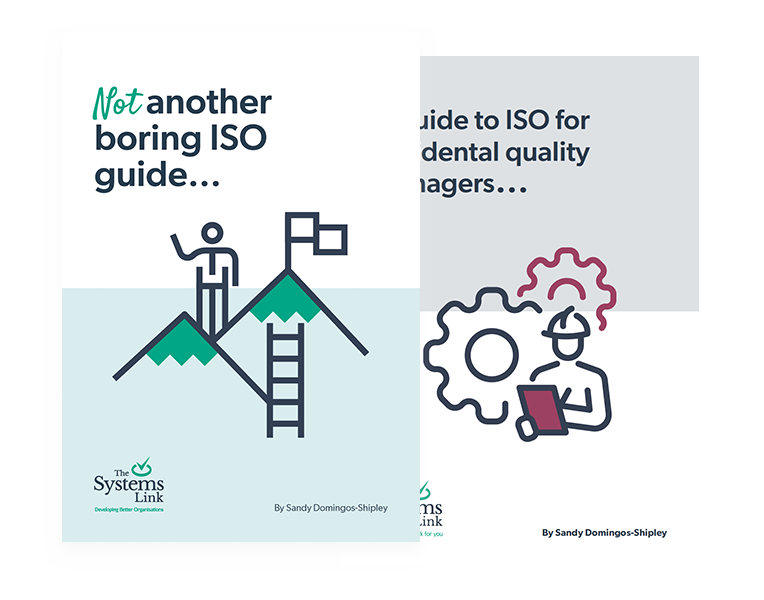ISO accreditation is exciting. Who doesn’t want to be recognised for having a world-class business?
But getting people on board with ISO isn’t easy – probably because most quality managers and consultants make it sound boring.
Talking about clauses, management systems, and conformity doesn’t exactly make ISO sound fun. And that’s why I love using analogies to explain how ISO works.
Choosing the right analogy
One of my favourite analogies for explaining how ISO works is my Lego analogy – I use this to explain how the different parts of the framework come together. But another analogy I use to explain the ISO framework is baking.
When you make a cake, you have a recipe to follow – you’re told what ingredients you need, what quantities you need them in, and what order to add them.
The ISO frameworks are like cake recipes – you’re given the ingredients and told how to put them together.
But once you’ve tried the basic recipe, you look for ways to improve it next time. Was it too sweet or too dry? Should you add more salt, use less sugar, or use this type of flour instead of another?
Just as you should always look for ways to improve your quality management system.
I love this analogy because it allows me to talk about cake (and I’m a huge fan of cake). But I also like it because it’s relatable – people understand how baking works even if they don’t bake themselves.
And because I’m using something people understand, it makes explaining ISO more interesting.
That’s the whole idea of analogies – they help you explain complex concepts in a way your audience can relate to.
Using analogies to engage your colleagues
Our brains find it easier to make judgements based on experience, which is why analogies work so well.
By using a concept your colleagues are already familiar with to explain something, you make it easier for them to process the information.
So if you’re struggling to get your senior leaders or colleagues engaged with ISO, use an analogy. Choose something your colleagues can relate to – something they will understand – and use that analogy as a foundation you can build on to keep them engaged.
Consider using visual aids to support your analogy – diagrams, flow charts, or even simple illustrations. Visuals help make the concept more memorable and easier to understand.
And don’t overcomplicate the analogy. Keep your language simple and avoid confusing jargon.
The simpler and more relatable you make the analogy, the easier it will be to get your colleagues engaged.
And if your colleagues are engaged with the ISO frameworks, implementing new policies and processes will be much easier.
Quality should never be the responsibility of one person – it should be a team effort. If you’re all working towards the same goals, it’ll be much easier to get there.
Focus on the framework
You might have noticed that both the analogies I’ve shared above focus on the ISO frameworks rather than ISO accreditation. That’s because I believe the benefits of ISO 9001 come from the management system rather than the certification itself.
While the certification might help you win better contracts, it’s the management system that makes your business world-class.
After all, the overriding purpose of ISO 9001 is to ensure quality, so it stands to reason that if your business implements the framework, you’ll deliver a more consistent quality of products and services, leading to:
- Higher customer satisfaction and fewer complaints
- Improved customer acquisition and retention
- Increased customer value
- Better reputation
- Increased profits
But if you want to unlock all the benefits of the ISO frameworks, you need to get your colleagues on board.
And it’s much easier to sell your colleagues the idea of fewer complaints, better customer retention and increased profits than to sell the idea of a certificate.
Getting more from your QMS and ISO certifications
Too many businesses work hard to get ISO accreditation but don’t make the most of the amazing systems they’ve built. It’s like buying expensive shoes but never wearing them.
Once you have your quality management system (QMS) in place, you can build on it and improve it to unlock the many benefits an effective QMS can provide:
- Ensure consistent quality
- Improve customer retention
- Make more informed business decisions
- Reduce errors and increase profits
- Create new business opportunities.
Those benefits can be unlocked with or without ISO certification. The certificate simply proves to external parties that you have world-class systems.
That’s why I focus on the ISO frameworks and the QMS rather than the accreditation. It makes it far easier to get teams engaged and ensures your business reaps the benefits.
If you’d like support with any aspect of implementing ISO standards or gaining ISO accreditation, let’s talk.
Contact us on 0113 418 2579 to find out how we could help your organisation grow and thrive.


